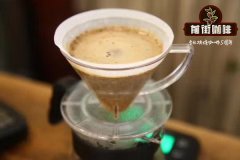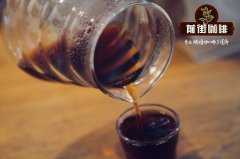Costa Rican Tangmeo processing plant Beneficio Don Mayo introduces Costa Rican coffee

Professional coffee knowledge exchange more coffee bean information please follow the coffee workshop (Wechat official account cafe_style)
Determined to be a leader in Costa Rican coffee, the Tang-Mayo processing plant has a history of 15 years, but it is actually a young processing plant-the family cooperative was founded in 1994, but did not set up its own processing plant until 2005. Located about five kilometers north of Tarazu-San Marcos town, the processing plant is responsible for the research and development of processing technology and the implementation of post-harvest treatment for the ten coffee estates joined; as the elevations of these estates are distributed on a hillside of 1500Muth1950 meters, all the coffees produced by Don Mayo are of SHB grade.
Traditionally, Costa Rica prides itself on its washed coffee-picking ripe red-purple berries by hand and tightly controlling the soaking and fermentation process. Not much and not a lot of fermentation makes the coffee a perfect balance between clarity and complexity; even if Costa Rican beans are the best washed beans in the world today, I believe many people will agree.
In recent years, however, this tradition is no longer dominant-the new "dry" treatment has become a trend, and micro-processing plants have been set up one after another. Because the water consumption is only 5% of that of traditional washing plants, and there is no need for huge sinks and exposure fields-these micro-treatment plants can be far away from the river bank, and the investment required is relatively small, making it affordable for many independent estates or small cooperatives. More importantly, with the new treatment method and the courageous manor owner, a kind of "honey-treated coffee" with low acidity, high complexity and rich sweet flavor has become the target of competition in the coffee industry in recent years. In recent years, the best of them have shone brilliantly in major competitions, which have greatly enhanced the international reputation of the estates-for example, Brumas, Herbazu, Helsar, Las Lajas, Don Mayo, Montes de Oro …
Because the characteristics of honey-treated coffee depend to a high extent on the setting of the pulp scraper-the more pulp you retain, the more obvious the characteristics of honey treatment. Of course, it takes a bit of risk to produce the most honey-treated coffee, because the more pulp you retain, the higher the risk of overfermentation. It may be the microclimatic conditions (sunshine / rainfall probability / air humidity) where the treatment plant is located. ), or the skill of the processor, or it may be purely the preference of the processor. So even coffee, also known as "Honey Coffee", actually has varying degrees of honey-treated features.
Qianjie recommended cooking parameters:
Hand punch: V60 filter cup small Fuji R440 grinding 3.5, water temperature about 90 degrees
The recommended grinding degree of normal pressure is 4 and the water temperature is 90 ℃.
The recommended siphon grinding degree is 4, and the water temperature is 90 ℃ ~ 91 ℃.
The pressure grinding degree of Philharmonic is recommended to be 3.5, and the water temperature is 90 ℃.
Important Notice :
前街咖啡 FrontStreet Coffee has moved to new addredd:
FrontStreet Coffee Address: 315,Donghua East Road,GuangZhou
Tel:020 38364473
- Prev

Marcala of Honduras introduces Honduran coffee.
Communication of professional baristas Please pay attention to the coffee workshop (Wechat official account cafe_style) Coffee produced in Honduras rarely appears in the coffee market, but the altitude and temperature changes of coffee growth and the fertile soil are the natural conditions for producing good coffee, but in the past, coffee farms or cooperatives in Honduras have stopped because their coffee processing technology and equipment are not perfect.
- Next

Introduction of Costa Rica Yano Manor introduction to the flavor characteristics of Costa Rican coffee
Professional coffee knowledge exchange more coffee bean information please follow the coffee workshop (Wechat official account cafe_style) in the past 10 years, more cutting-edge dry treatment has become a trend, collectively known as the new method of honey treatment, the use of scraper to adjust the degree of scraping function, output with the color from light to dark (white, yellow-red-white, yellow-red-black) and show a sense of honey from light to strong, with acidity
Related
- Does Rose Summer choose Blue, Green or Red? Detailed explanation of Rose Summer Coffee plots and Classification in Panamanian Jade Manor
- What is the difference between the origin, producing area, processing plant, cooperative and manor of coffee beans?
- How fine does the espresso powder fit? how to grind the espresso?
- Sca coffee roasting degree color card coffee roasting degree 8 roasting color values what do you mean?
- The practice of lattes: how to make lattes at home
- Introduction to Indonesian Fine Coffee beans-- Java Coffee producing area of Indonesian Arabica Coffee
- How much will the flavor of light and medium roasted rose summer be expressed? What baking level is rose summer suitable for?
- Introduction to the characteristics of washing, sun-drying or wet-planing coffee commonly used in Mantenin, Indonesia
- Price characteristics of Arabica Coffee Bean Starbucks introduction to Manning Coffee Bean Taste producing area Variety Manor
- What is the authentic Yega flavor? What are the flavor characteristics of the really excellent Yejasuffi coffee beans?

